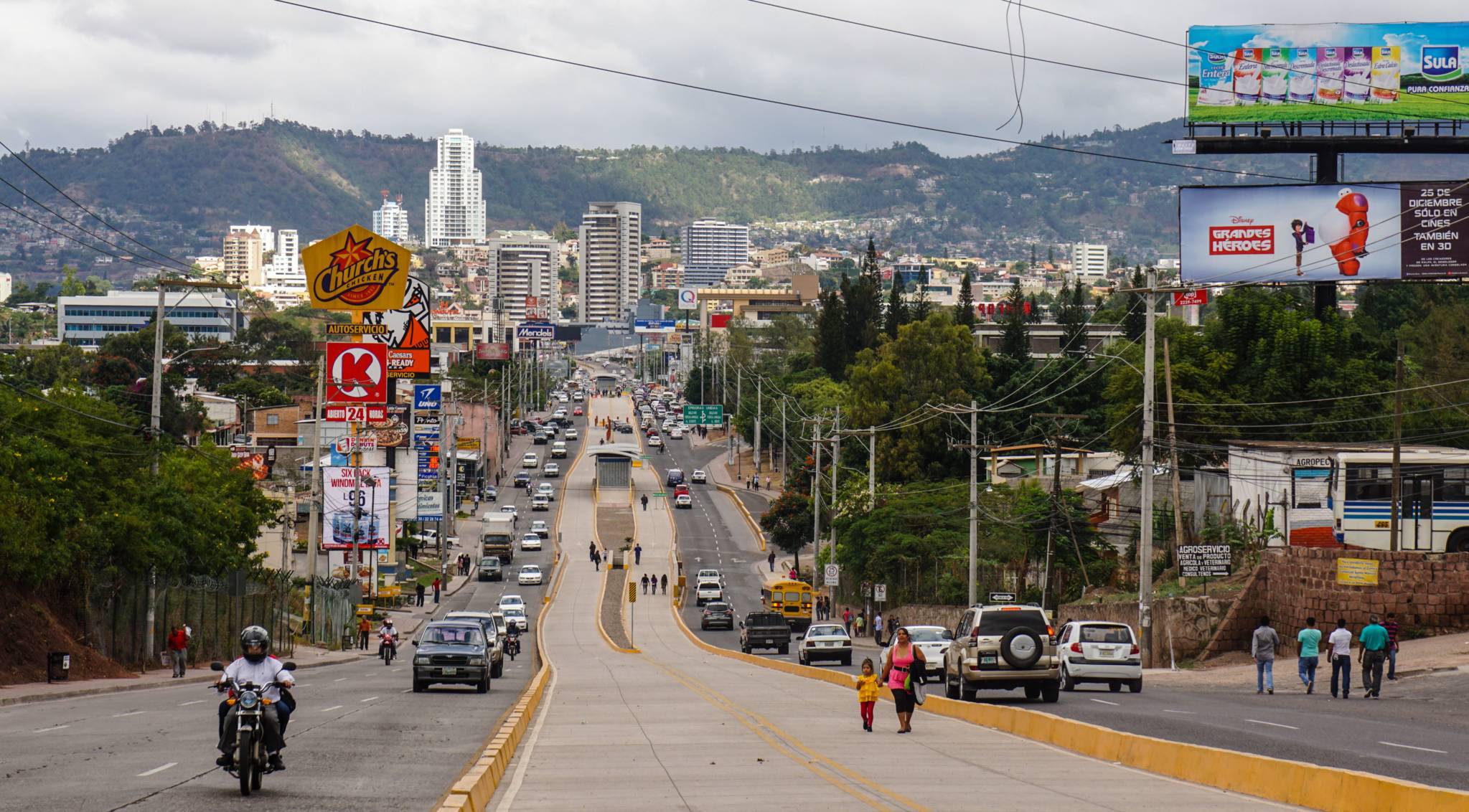We use Cookies. Read our Terms
- News
- Honduras: Increasing mobility through better public transport
Honduras: Increasing mobility through better public transport

Photo: Shutterstock
Honduras has committed to the development of a modern and efficient public transport system in its sister cities of Tegucigalpa and Comayagüela.
In some cities of Latin America, there is a widespread feeling of insecurity when using public transport. Very often, vehicles ignore the established stops. Once on board, you never know if you will get a seat, if you will arrive on time, or if you’ll have to pay additional fees for unscheduled route changes. You may even have to pray that you won’t get caught up in any violence. In Tegucigalpa, the capital of Honduras, commuters experience these feelings day in, day out on public transport, which accounts for 71 percent of the urban mobilization.
The metropolitan area of Honduras, the second poorest country in the region after Haiti, is made up of Tegucigalpa and Comayagüela, two cities separated by the Choluteca River. Together, they form the country’s largest urban center with over one million inhabitants. The National Statistics Institute estimates that 48 percent of the population lives in poverty, and that these are the people most affected by the shortcomings of the public transport system.
Romulo Martinez, OFID country officer for Honduras acknowledges that the bulk of public transport users are low-income earners. They have no option but to spend long periods of time in uncomfortable and unsafe conditions while moving within the capital city.
According to Martinez, the mobility problem is exacerbated by the severe traffic congestion in the two cities. “This adversely affects the efficiency of passenger and freight transport services and other economic activities, impacting the overall competitiveness of the cities and the country at large,” he explained.
The National Commissioner for Human Rights reported in March 2015 that there was a violent death every five days on average on Honduran buses, accompanied by an equal number of wounded. The Central District, as the capital is also known, ranks fifth in crime, as described by diverse NGOs, such as Security, Justice and Peace, from Mexico, and Global Witness, from the UK.
The impact of violence on the economy has been extensively evaluated. The Global Peace Index, compiled by the Institute for Economics and Peace, one of the most influential think tanks dedicated to analyzing peace and to quantifying its economic value, ranks Honduras fourth in the group of the most violent countries in the region. In 2015, the Institute estimated the “national cost of violence” in Honduras to be over US$8bn.
Rapid mass transport increases mobility and safety
Restructuring urban transport in the Central District has become an imperative. After 20 years of government studies, the best proposal Honduras: Increasing mobility through better public transport Honduras has committed to the development of a modern and efficient public transport system in its sister cities of Tegucigalpa and Comayagüela. For the residents of those cities, this means shorter travel time, less pollution, better traffic conditions and improved public safety. I OFID for improving mobility was that of a rapid mass transport system. The decision took into account the positive experiences of similar systems implemented in key cities in Colombia, Brazil and Guatemala.
Following its mandate, OFID joined with the Inter-American Development Bank, the Central American Bank for Economic Integration, and the Government of Honduras, to support the Central District Municipal Government in co-funding a public transport project that would benefit mostly the low-income populations lacking private means of transportation.
Officially named Trans 450, and popularly known as “Metrobús Tegucigalpa,” the system is one of the most important projects in the country. Construction of the new system started in 2010, with the first phase inaugurated in 2014. The project entailed the development of a main route devoted to the largest number of passengers—Boulevard Suyapa-Boulevard CentroAmérica corridor—and included the construction of close to 9km of dedicated bus corridors with accompanying signs, sidewalks and integrated traffic lights.
The project also helped to revitalize downtown Tegucigalpa and pedestrian areas through the construction of terminals, bus stops and stations with urban improvements and landscaping, as well as bicycle facilities in the city’s historic center.
The new rapid mass transport system is used by around 80,000 passengers per day, representing 20 percent of all public transport in the city. With a fleet of approximately 140 buses, this breaks down to a current average of almost 600 passengers per day per vehicle. Time saving per user is estimated to be 20 minutes per day each way, equivalent to a total 7.5 million hours saved a year. Fee reductions are also part of the new service, since as an integrated system there are no additional costs involved for users to transfer.
Another advantage associated with the new system is the better organization of traffic and the resulting reduction in congestion. What’s more, the use of modern buses with lower emissions, accompanied with better use of urban spaces, has contributed to a decrease of CO2 emissions, air pollution and noise levels. The crime rate on the buses has also decreased.
The provision of an efficient transport structure offering a high quality of service is a commitment to the inhabitants of the capital of Honduras that could not be delayed any longer. Not even for a single day.